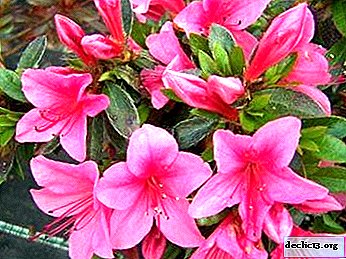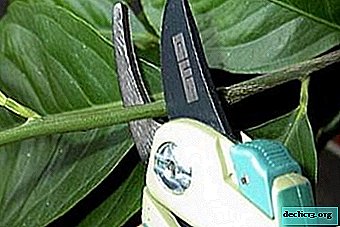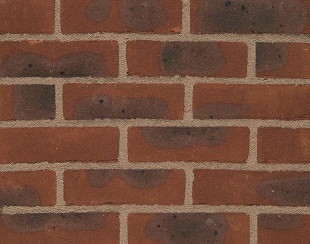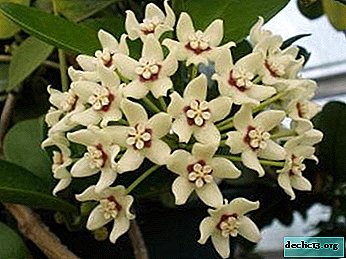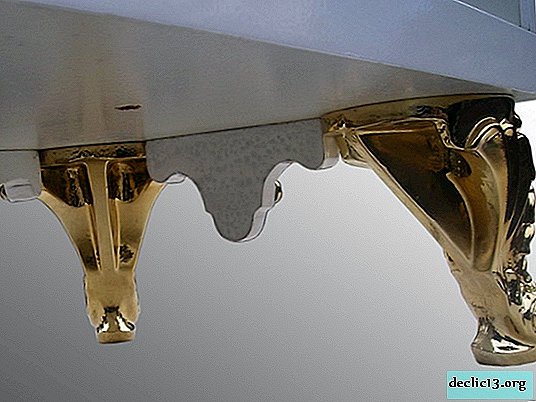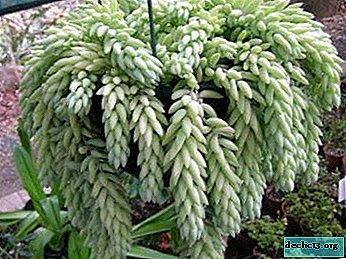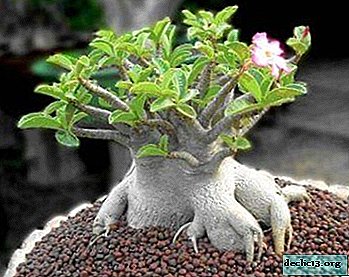Planting orchids in a closed system. Principle and Step-by-Step Actions
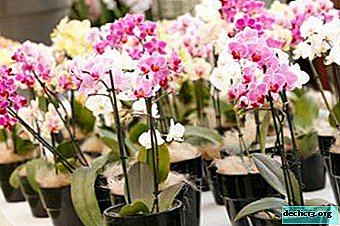
The closed orchid planting system was invented not so long ago, and all the archdioces were divided into two camps - furious fans and no less furious opponents of this system. Traditionally, orchids are grown in containers with openings for outflow of excess water and ventilation of the roots, because the orchid is an epiphytic plant and its roots are open in nature. The closed planting system consists in planting an orchid in a pot without holes, and pouring water at the bottom.
But not everything is as scary as it seems at first glance. If this method was deadly for flowers, it would not have received such mass distribution and a lot of praise from people who decided to try it.
Principle of operation
A plant planted in a closed pot, at the bottom of which there is water, has constant access to moisture and begins to pull and grow roots towards its source, that is, down. The root system is developing intensively, bulging roots wake up, and a powerful root system contributes to the rapid growth of leaves and peduncles. At the same time, the upper part of the roots does not dry out, since increased humidity is created in the container, which does not evaporate from the moss layer laid on top.
Advantages and disadvantages
There are many advantages of this method, and they look very attractive:
- Time saving. Orchids planted in this way require a minimum of attention and care for them is very simple - every 3-5 weeks add water and that's it.
- Fast resuscitation of half-dead plants. At sales at a discount, orchids with rotten roots, without leaves are sold, and at first glance it seems hopeless to go out. But after being placed in a closed system, they come to life, grow roots and even begin to bloom.
- Intensive growth of leaves and roots, as well as plentiful long flowering.
- The closed system is ideal for growing orchids in dry climates. Plants growing in containers with water do not release aerial roots, since they have enough moisture and do not need to look for it in the air.
- Protect the roots from decay. Sphagnum moss, which is put in a pot, has powerful disinfectant and antibacterial properties, this natural antibiotic gives flowers health.
Disadvantages arise from errors in care and from non-compliance with landing rules:
- Decay of the growth point or roots.
- The appearance of insects in the substrate.
- The occurrence of mold.
- Overdried plants are difficult to translate into a closed system.
- Not suitable for humid climates.
A possible shortcoming is also called the growth of green algae on the walls of the tank, but this is a natural process, which shows that its own biosystem has been established inside.
Training
In order for the planting to be successful and the orchid to take root in a new place, you need to purchase everything you need in advance, and you should start by choosing a container.
Choosing the right capacity
 As a pot, it is better to take a glass container, it is more stable than plastic, and it looks more beautiful. In addition, glass does not have a porous structure, which prevents the ingrowth of roots.
As a pot, it is better to take a glass container, it is more stable than plastic, and it looks more beautiful. In addition, glass does not have a porous structure, which prevents the ingrowth of roots.
The shape may be different, but round is undesirable, because if you need to transplant a plant, pulling out the root system without damaging it will be problematic. The round flask will have to be broken. All kinds of glasses, glasses and even beer mugs are suitable for children and orchids with small roots, it all depends on the imagination or what is at hand.
Larger plants need volumetric capacity: multi-liter vases or even small aquariums in which several flowers can be planted at the same time. But you shouldn’t do it right away, it is more reasonable to test a closed system on one plant.
Reference! A transparent vessel should be chosen, it is easier to control the water level and observe what is happening inside.You can find out more about orchid pots here.
Substrate
The substrate for planting in a closed container consists of several components that cannot be mixed, but must be laid in layers:
- expanded clay;
- moss sphagnum;
- bark or substrate for orchids;
- charcoal.
All this is sold in a flower shop, but bark and moss can be typed in the forestif he is near. Pieces of bark are preferably large so that moist air “walks” freely between them, and without traces of mold, they are also successfully replaced with cones.
You do not need to boil, calcine or disinfect, everything is poured into the container directly from the bags. It is advisable to buy sphagnum moss alive, or when buying, choose one in which there are at least small green branches, they will later come to life and the moss will grow.
More information about the soil for orchids can be found here.
Step by Step Actions
- At the bottom of a clean tank pour expanded clay drainage, 3-4 centimeters.
- Then a layer of moss, a half centimeter wide.
- The next layer is bark.mixed with charcoal or substrate for orchids.
- Further take a peeled flower, straighten the roots and put in a container. Be sure to make sure that the neck does not go deep into the pot, but is on the surface, otherwise it will rot.
- Then gently fill the tank to the top with the crust so that the orchid sat tightly in it and did not hang out.
- Spread a layer of moss on top, here it will serve as mulch and will protect moisture from intense evaporation.
- After pour warm water to the top and drain in half an hour, but not all, but so that the lower layer of expanded clay was completely covered with water.

That's all, landing in a closed system is over. Now it remains only to place the plant in the zone corresponding to the competent regime of lighting and temperature, and add water as needed.
Important! You need to plant a flower so that the roots do not reach the expanded clay with water.This method is good in that the roots are constantly in an optimally moist, rather than excessively wet, or vice versa, dry environment.
Read more about planting orchids here.
More detailed instructions on landing in the video:
Plant adaptation
Their adaptation depends on the degree of impact on the root system. If the plant underwent a radical operation to trim dry or rotten roots, it will be difficult to transfer the transplant. So that this does not happen, you need to adhere to simple rules, namely: replant a flower when it is in the growth phase and at the same time leave part of the old substrate. You do not need to give top dressing right away, it will only do harm.
Also, during the adaptation period, the plant can dry the lower leaves, or throw off flowers, this is a normal reaction of a flower getting used to a new place of residence.
Further care
 Behind orchid growing in a closed system care is very simple, it includes watering and top dressing. Spraying, diving, bathing in the shower will already be superfluous, and while there are drops of condensation on the walls of the vessel, the plant generally does not need additional moisture. Watering itself occurs as follows: water is poured with a thin stream until it covers a layer of expanded clay. This water level should be maintained constantly.
Behind orchid growing in a closed system care is very simple, it includes watering and top dressing. Spraying, diving, bathing in the shower will already be superfluous, and while there are drops of condensation on the walls of the vessel, the plant generally does not need additional moisture. Watering itself occurs as follows: water is poured with a thin stream until it covers a layer of expanded clay. This water level should be maintained constantly.
They begin to feed the orchid only after it has taken root and has grown. A flower living in a closed system requires very few fertilizers, 10 times less than indicated in the instructions. You can make them both at each watering, and every other time.
Difficulties and problems
- The most common problem is excessively large and deep vessel. The orchid in it simply simply dries up, since the roots are too far from moisture. Therefore, the growth should not be taken capacity.
- The next nuisance is mold. It is not worth it to be afraid, after the plant adapts and grows, it will disappear by itself.
- Fine substrate or pieces of bark often cause root decay, because the trash absorbs and retains water perfectly. In addition, it goes astray, becomes dense and does not allow air to pass through.
- Wet substrate like midges. First of all, it is necessary to find out the type of insects, the degree of their danger to orchids, and then choose the optimal method of combating them.
How long can flowers grow when using this method?
Fans of the traditional method claim that the method of closed landing can be applied temporarily, only for the period of resuscitation of a plant or growing a baby. At the same time, the many years of experience of other lovers shows that with proper care and compliance with all the rules, orchids remain healthy and live in a closed system for many years.
Whatever method of planting is chosen, one should always remember that any living organism needs attention and care, and a disregard for attitude will destroy even the strongest plant.


